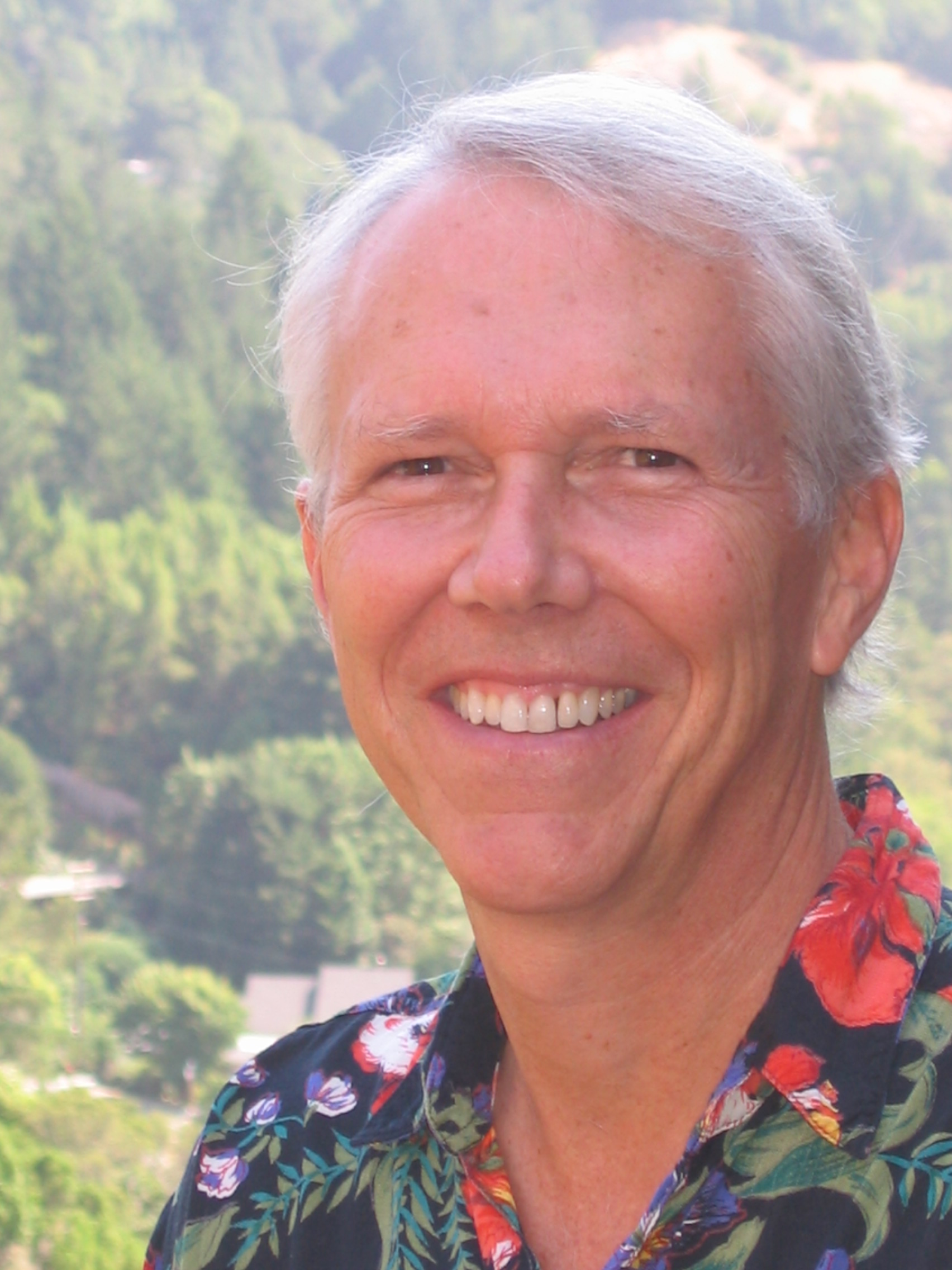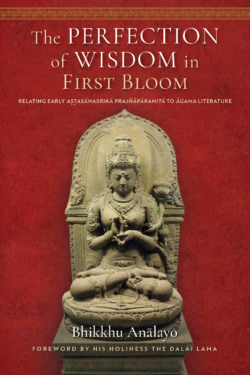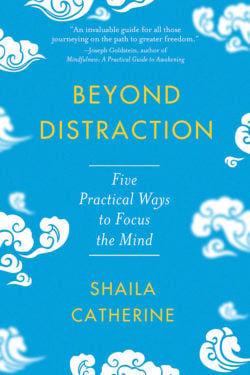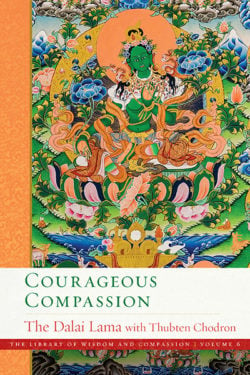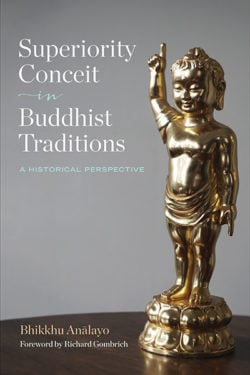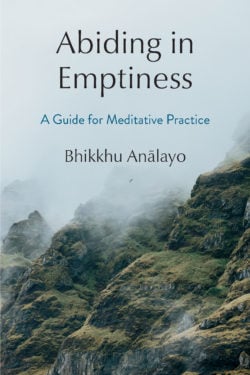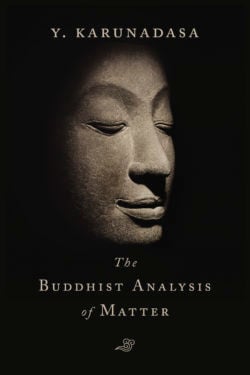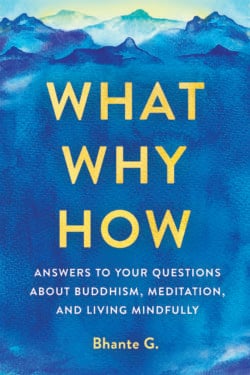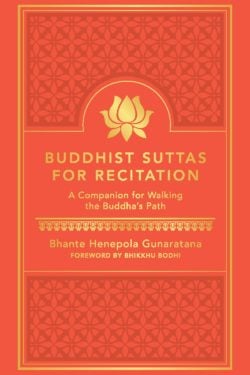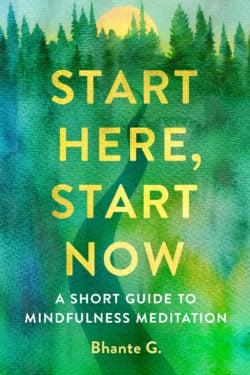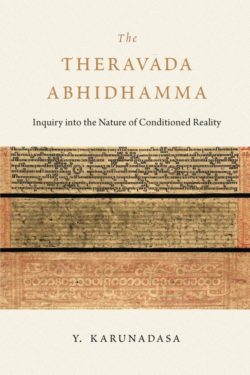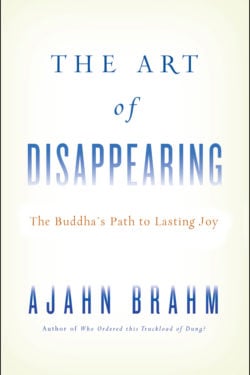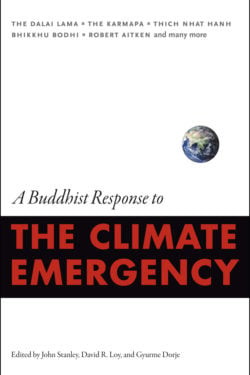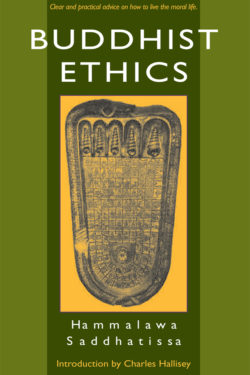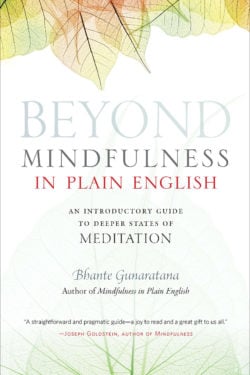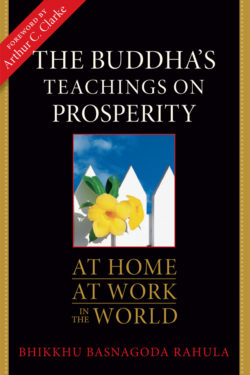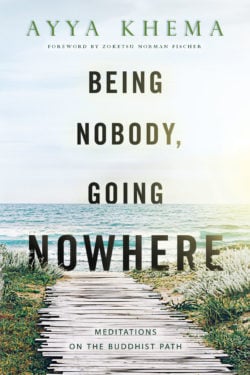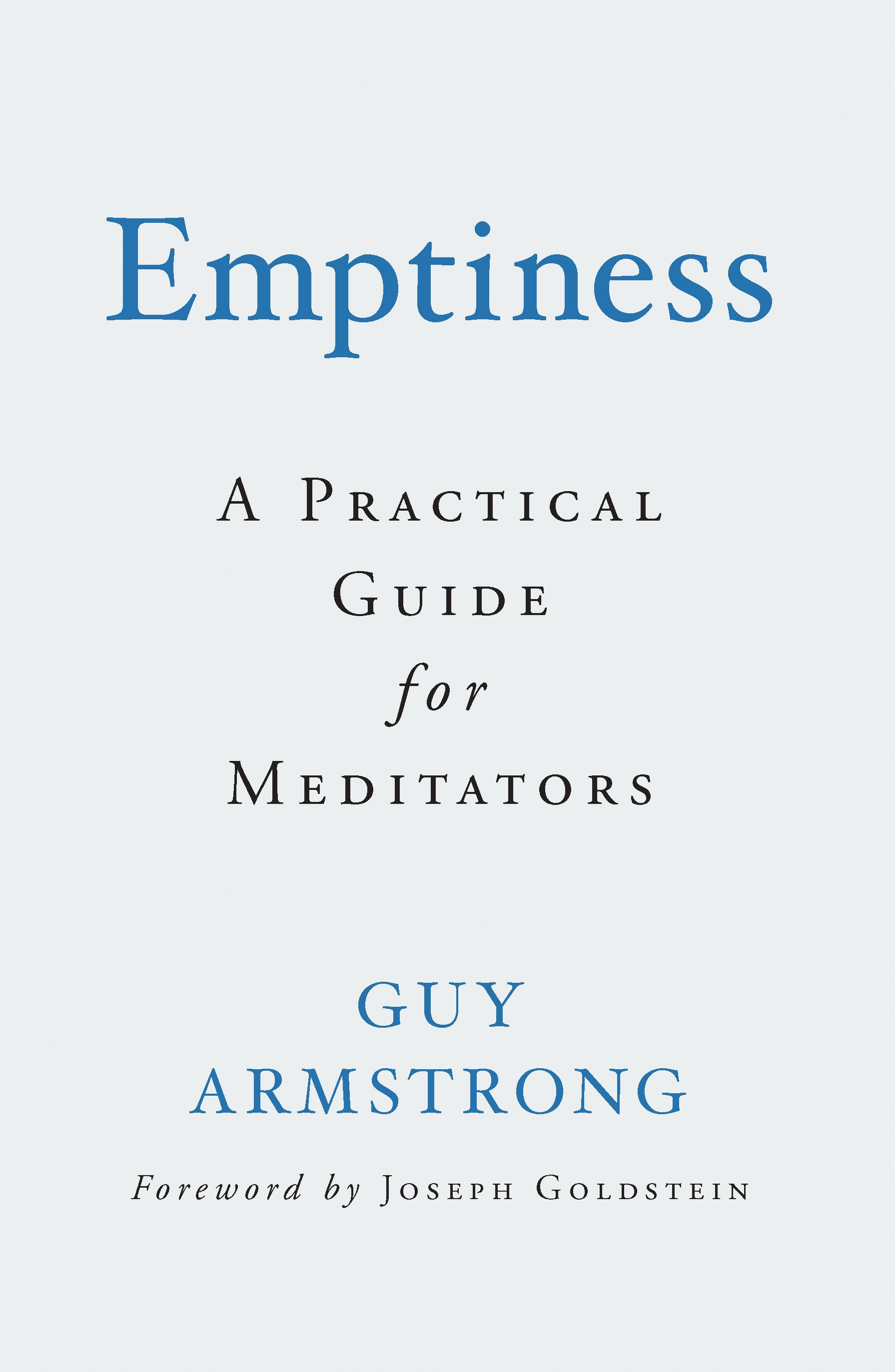
EMPTINESS
It may seem odd for emptiness to serve as the central philosophy of a major religion. In fact, emptiness points to something quite different than “nothingness” or “vacancy.” And by developing a richer understanding of this complex topic, we can experience freedom as we live consciously in the world.
Guy Armstrong has been a leading figure and beloved teacher of insight meditation for decades. In this book, he makes difficult Buddhist topics easy to understand, weaving together Theravada and Mahayana teachings on emptiness to show how we can liberate our minds and manifest compassion in our lives.
- Hardcover
- 328 pages, 6 x 9 inches
- $29.95
- ISBN 9781614295266
- Paperback
- 328 pages, 6.00 x 9.00 inches
- $17.95
- ISBN 9781614295266
- eBook
- 328 pages
- $17.99
- ISBN 9781614293798
Discover More
The Perfection of Wisdom in First Bloom
See the formative years of Mahayana Buddhist literature through the lens of the Perfection of Wisdom, expertly analyzed by the venerable scholar-monk Bhikkhu Analayo.
In this work we have a rare perspective on the early history of Mahayana Buddhism and the Perfection of Wisdom (Prajnaparamita), as far as this is still accessible in surviving texts. With his characteristic clarity and precision, Bhikkhu Analayo critically analyzes early Perfection of Wisdom literature based on the earliest extant versions of the Astasahasrika Prajnaparamita, or the Perfection of Wisdom in Eight Thousand Lines, one in Chinese and the other in Gandhari—one of the oldest surviving Mahayana manuscripts discovered to date. In reading this text from the viewpoint of early Buddhist literature, the author shows that what has generally been considered a sharp rupture in the formation of the Mahayana turns out to be more of a gradual evolution.
With his command of the languages of the ancient Buddhist world, scholar-monk Bhikkhu Analayo sifts through the layers of history and unveils new perspectives on the ideas and figures in early Perfection of Wisdom and Mahayana literature, covering such topics as the rhetoric of emptiness and the emerging bodhisattva ideal, as well as the status of women and the practice of self-immolation. In doing so, Bhikkhu Analayo reveals fresh insights into the gradual development that informs the emergence of early Perfection of Wisdom literature. This is a rare opportunity to peer through a window at the beginnings of Mahayana thought—before the traditions had coalesced into the familiar forms we see today.
Beyond Distraction
The mind can be a potent tool, used to guide extraordinary achievements, inspire good works, and incline your spiritual path toward peace and awakening. But the mind can also produce thoughts that lead to suffering. For many people, thoughts run rampant and seem to oppress or control their lives. Even the Buddha tells us that before his enlightenment, he sometimes found his mind preoccupied by thoughts connected with sensual desire, ill will, and harm. But he figured out how to respond to thoughts skillfully and developed a step-by-step approach to calm the restless mind. Now, Insight Meditation teacher Shaila Catherine offers an accessible approach to training the mind that is guided by the Buddha’s pragmatic instructions on removing distracting thoughts. Drawing on two scriptures in the Middle Length Discourses of the Buddha, Shaila shows you how to overcome habitual modes of thinking, develop deeper concentration, and discover the insights into emptiness that are vital for a liberating spiritual path.
Following the Buddha’s pragmatic approach, Shaila guides you through five steps for overcoming distraction and focusing the mind:
- Replace unwholesome thoughts with wholesome thoughts.
- Examine the dangers of distracting thoughts.
- Avoid it, ignore it, forget it.
- Investigate the causes of distraction.
- Apply determination and resolve.
Each chapter includes exercises and reflections to help you cultivate the five steps to deeper concentration. You’ll learn about your mind and develop your ability to direct your attention more skillfully in meditation and daily activities. And ultimately, you’ll discover for yourself how these five steps boil down to one key realization: In the moment you recognize that a thought is just a thought, you will find yourself on the path to a life of remarkable freedom.
Courageous Compassion
Courageous Compassion, the sixth volume of the Library of Wisdom and Compassion, continues the Dalai Lama’s teachings on the path to awakening. The previous volume, In Praise of Great Compassion, focused on opening our hearts with love and compassion for all living beings, and the present volume explains how to embody compassion and wisdom in our daily lives. Here we enter a fascinating exploration of bodhisattvas’ activities across multiple Buddhist traditions—Tibetan, Theravāda, and Chinese Buddhism.
After explaining the ten perfections according to the Pāli and Sanskrit traditions, the Dalai Lama presents the sophisticated schema of the four paths and fruits for śrāvakas and solitary realizers and the five paths for bodhisattvas. Learning about the practices mastered by these exalted practitioners inspires us with knowledge of our minds’ potential. His Holiness also describes buddha bodies, what buddhas perceive, and buddhas’ awakening activities.
Courageous Compassion offers an in-depth look at bodhicitta, arhatship, and buddhahood that you can continuously refer to as you progress on the path to full awakening.
Learn more about the Library of Wisdom and Compassion series.
Superiority Conceit in Buddhist Traditions
Armed with his rigorous examination of the canonical records, respected scholar-monk Bhikkhu Anālayo explores—and sharply criticizes—four examples of what he terms “superiority conceit” in Buddhism:
- the androcentric tendency to prevent women from occupying leadership roles, be these as fully ordained monastics or as advanced bodhisattvas
- the Mahayana notion that those who don’t aspire to become bodhisattvas are inferior practitioners
- the Theravada belief that theirs is the most original expression of the Buddha’s teaching
- the Secular Buddhist claim to understand the teachings of the Buddha more accurately than traditionally practicing Buddhists
Ven. Anālayo challenges the scriptural basis for these conceits and points out that adhering to such notions of superiority is not, after all, conducive to practice. “It is by diminishing ego, letting go of arrogance, and abandoning conceit that one becomes a better Buddhist,” he reminds us, “no matter what tradition one may follow.”
Thoroughly researched, Superiority Conceit in Buddhist Traditions provides an accessible approach to these conceits as academic subjects. Readers will find it not only challenges their own intellectual understandings but also improves their personal practice.
Abiding in Emptiness
Before the growth of the Mahāyānā and the Perfection of Wisdom, the Buddha gave his own teachings, to his attendant Ānanda, on the importance of emptiness (Pāli suññatā, Sanskrit śūnyatā) in formal meditation and everyday practice. In this volume, renowned scholar-monk Bhikkhu Anālayo explores these teachings and shows us how to integrate them into our lives.
Bhikkhu Anālayo draws from instructions found in the Greater and the Smaller Discourses on Emptiness (the Mahāsuññatasutta and the Cūḷasuññatasutta). In each chapter, he provides a translation of a pertinent excerpt from the discourses, follows this with clear and precise explanations of the text, and concludes by offering instructions for practice.
Step by step, beginning with daily life and concluding with Nirvana, Bhikkhu Anālayo unpacks the Buddha’s teachings on the foundational teaching of emptiness.
The Buddhist Analysis of Matter
The Buddhist Analysis of Matter is an in-depth study of the Buddhist view of the nature and composition of matter as interpreted in Theravāda Buddhism. The study is mainly based on the seven treatises of the canonical Abhidhamma as well as the subsequent commentarial exegesis. However, in order to bring the subject into a wider perspective and to present it with a measure of precision, it takes into consideration the parallel doctrines of the Vaibhāṣika and Sautrāntika schools of Buddhism. These were two of the leading non-Mahāyāna schools with which the Theravādins had much in common. Both subscribed to a realistic view of existence: while the former had a tendency to extreme realism, the latter had a predilection, but not a commitment, to subjectivism.
Acclaimed scholar Y. Karunadasa’s Buddhist Analysis of Matter provides a much-needed micro view of the topic with a detailed examination of the Theravādins’ list of rūpa-dhammas—the ultimate irreducible factors into which material existence is analyzed. It exposes the nature of the basic material elements and explains their interconnection and interdependence on the basis of conditional relations. It concludes with an attempt to understand the nature and relevance of the Buddhist analysis of matter in the context of Buddhism as a religion.
Creating a Life of Integrity
Creating a Life of Integrity is our personal trainer for strengthening our integrity muscles.
When we don’t speak or act from our own sense of integrity, we feel lousy. Find out how you can live with more integrity—and subsequently more joy—as you follow these lively conversations between Joseph Goldstein, a founder of the modern mindfulness movement, and Gail Stark, a businesswoman and his student and friend of twenty-five years.
As Joseph and Gail unpack the components of integrity—generosity, virtue, renunciation, wisdom, courage, patience, truthfulness, resoluteness, loving-kindness, and equanimity—we discover each is a step on a path that transports us to an empowered place of clarity, commitment, and, consequently, more joy. As we strengthen and weave these qualities into our daily lives they become our trusted first response in a world that needs our integrity now.
What, Why, How
Everything you ever wanted to know but never had a chance to ask about meditation and Buddhist spiritual practice, from one of the greatest mindfulness teachers of our time.
How can I fit meditation into my busy life?
How should I understand karma and rebirth?
Is enlightenment even possible for me?
Sound familiar? If you’ve ever meditated or studied Buddhism, you may have found yourself asking these questions—and many more! Here’s the good news: there are answers, and you’ll find them all in this book. Imagine that you could sit down with one of Buddhism’s most accomplished and plainspoken teachers—and imagine that he patiently agreed to answer any question you had about meditation, living mindfully, and key Buddhist concepts—even the myriad brilliant questions you’ve never thought to ask! What, Why, How condenses into one volume a half-century of Bhante G.’s wise answers to common questions about the Buddha’s core teachings on meditation and spiritual practice. With his kind and clear guidance, you’ll gain simple yet powerful insights and practices to end unhealthy patterns and habits so that you can transform your experience of the world—from your own mind to your relationships, your job, and beyond.
Buddhist Suttas for Recitation
Bring the Buddha’s teachings more deeply into your life.
Buddhist Suttas for Recitation provides everything you need to begin and maintain a practice of contemplative recitation and reflection. These practices will deepen your connection to the Buddha, strengthen your faith in the Path, and nurture your intellectual understanding of the Dhamma.
This unique volume includes carefully chosen discourses of the Buddha from the Pali Canon—presented in inspiring and accessible English with accompanying Pali—that convey the essence of the Dhamma. The introductory material explains the relationship between meditation and devotional practice, offers instructions on setting up a home altar, and gives advice on how to use these texts to enhance your spiritual development.
Start Here, Start Now
A master of mindfulness, who has taught thousands to meditate, Bhante G. will show you exactly how to start your own practice and make it a part of your daily life. The book includes practical advice on
- what to do with the body and mind in meditation;
- how to work with distraction;
- how to deal with physical discomfort in meditation;
- how to overcome drowsiness, boredom, and inability to concentrate;
how to work with fear and agitation, judgments, and self-criticism; - how to avoid trying too hard, expecting too much, or getting discouraged;
- 11 common misconceptions and 10 tips for effective practice; and
- how to get the most out of your practice.
You can start meditating today and, with Bhante G.’s guidance, discover more peace, presence, and joy in everyday life.
The Theravada Abhidhamma
The renowned Sri Lankan scholar Y. Karunadasa examines Abhidhamma perspectives on the nature of phenomenal existence. He begins with a discussion of dhamma theory, which describes the bare phenomena that form the world of experience. He then explains the Abhidhamma view that only dhammas are real, and that anything other than these basic phenomena are conceptual constructs. This, he argues, is Abhidhamma’s answer to common-sense realism—the mistaken view that the world as it appears to us is ultimately real.
Among the other topics discussed are
-
-
- the theory of double truth (ultimate and conceptual truth),
- the analysis of mind,
- the theory of cognition,
- the analysis of matter,
- the nature of time and space,
- the theory of momentary being, and
- conditional relations.
-
The volume concludes with an appendix that examines why the Theravada came to be known as Vibhajjavada, “the doctrine of analysis.”
Not limiting himself to abstract analysis, Karunadasa draws out the Abhidhamma’s underlying premises and purposes. The Abhidhamma provides a detailed description of reality in order to identify the sources of suffering and their antidotes—and in doing so, to free oneself.
The Art of Disappearing
Whether mere bumps in the road or genuine crises, we live in a world of unwanted events that no willpower can prevent. In The Art of Disappearing, Ajahn Brahm helps us learn to abandon the headwind of false expectations and follow instead the Buddha’s path of understanding. Releasing our attachment to past and future, to self and other, we can directly experience the natural state of serenity underlying all our thoughts and discover the bliss of the present moment. In that space, we learn what it is to disappear. Ajahn Brahm, an unparalleled guide to the bliss of meditation, makes the journey as fun as it is rewarding.
The Art of Disappearing, comprised of a series of teachings Ajahn Brahm gave to the monks of Bodhinyana Monastery, where he serves as abbot, offers a unique glimpse into the mind of one of contemporary Buddhism’s most engaging figures.
A Buddhist Response to the Climate Emergency
Never before have so many teachers from all Buddhist traditions—Zen, Vajrayana, Theravada, Vipassana; from the West and the East—come together to offer a unified response to a matter of utmost urgency. This watershed volume is at the same time a clarion call to action and a bright beacon of hope.
With contributions from: His Holiness the Dalai Lama, the Seventeenth Karmapa, Sakya Trizin, Dudjom Rinpoche, Chatral Rinpoche, Ato Rinpoche, Dzongsar Khyentse Rinpoche, Thrangu Rinpoche, Dzigar Kongtrul Rinpoche, Chokyi Nyima Rinpoche, Ringu Tulku Rinpoche, Tsoknyi Rinpoche, Robert Aitken, Joanna Macy, Bhikkhu Bodhi, Joseph Goldstein, Taigen Dan Leighton, Susan Murphy, Matthieu Ricard, Hozan Alan Senauke, Lin Jensen, and Thich Nhat Hanh.
Unsubscribe
After the 9/11 terrorist attacks, Josh Korda left his high-powered advertising job—and a life of drug and alcohol addiction—to find a more satisfying way to live. In Unsubscribe, he shares his three-step guide to recovery from addiction to consumerism, self-deception, and life as you thought it had to be:
- Reprioritize your goals, away from a materialist vocation toward a fulfilling avocation
- Understand yourself and your emotional needs
- Connect authentically with others, leading to secure relationships and true community.
Revolutionary, compassionate, and filled with wonderfully practical exercises, Josh will help you lead a more authentic, more fulfilling life.
Josh Korda has been featured on:




Buddhist Ethics
“For more than a quarter of a century, those in search of an introduction to Buddhist moral thought have turned and returned to this little volume…” Thus notes Charles Hallisey of Harvard University in his introduction. Starting with an examination of classical Greek notions of ethics, Venerable Saddhatissa goes on to explain the development of Buddhist moral codes and their practical application. In this work, Venerable Saddhatissa starts with an examination of Western notions of ethics, beginning with the early Greek philosophers and moving on to show us how the study of morality is crucial to a clear understanding of the Buddhist tradition. Drawing on a vast array of Buddhist scriptures, Venerable Saddhatissa explains the development and position of Buddhist precepts from a traditional perspective, while simultaneously offering clear and practical advice on how best to live the moral life of a lay Buddhist practitioner. Throughout Buddhist Ethics, Venerable Saddhatissa always keeps us in touch with the pragmatic uses of Buddhist moral practices, not only as a way to live in harmony with the world, but as an indispensable aspect of the path to the Buddhist’s highest spiritual goal.
Beyond Mindfulness in Plain English
Countless people worldwide have made Mindfulness in Plain English a beloved and bestselling classic in almost a dozen languages. Now after nearly two decades, Bhante helps meditators of every stripe take their mindfulness practice to the next level—helping them go, in a word, beyond mindfulness. In the same warm, clear, and friendly voice, Bhante introduces the reader to what have been known for centuries as the “jhanas”—deeply calm, joyous, and powerful states of meditation that, when explored with the clearly presented tools in this book, can lead to a life of insight and unshakeable peace.
The Buddha’s Teachings on Prosperity
Money and investing. Family. Relationships. Work and business. Sex. What could the Buddha tell us about such worldly concerns? More than you might think—and you’ll find it all here. Some of it might well surprise you. All of it will guide you toward a more prosperous, more fulfilling, and truly happier way of life.
The Buddha had an unusually keen insight into what people with everyday concerns need to know, and The Buddha’s Teachings on Prosperity delivers the actual teachings that he gave to all those many people he encountered who were not monks or nuns-or even, meditators. This is practical advice on the important stuff of life, those things nearly all of us must deal with in order to enjoy a meaningful, lasting happiness:
- Taking care of children and aging parents
- Providing for our families
- Working with employees and business partners
- Finding and maintaining love relationships and marital partnerships
- Making responsible, ethical financial decisions
- Cultivating the best in your personality
These very do-able practices are specifically for those who can’t or (for whatever reason) won’t be devoting their lives to meditation or any kind of religious teaching—but who nonetheless wish to minimize their suffering, maximize their joy, and help create a better world.
Being Nobody, Going Nowhere
In this lucid classic, beloved teacher Ayya Khema introduces the reader to the essence of the Buddhist path. She addresses the how and why of meditation, providing a clear framework for understanding the nature of karma and rebirth and the entirety of the eightfold path. With specific, practical advice Ayya Khema illuminates the practices of compassion and sympathetic joy and offers forthright guidance in working with the hindrances that we all encounter in meditation. Few introductory books are both simple and profound. Being Nobody, Going Nowhere is both.

